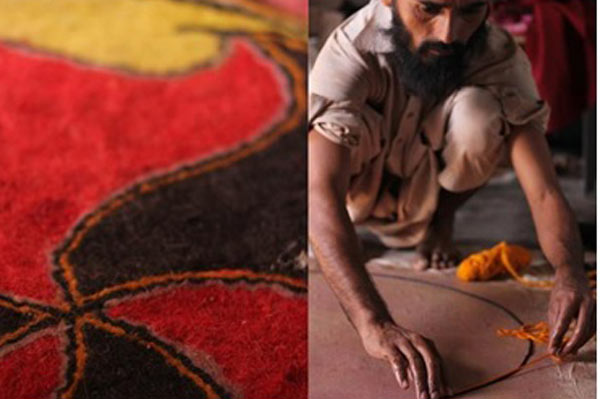In the 11th century, during the reign of the Mughal Emperor Akbar, a man named Nubi innovatively created a felted covering for the king’s ill horse. Ever since, people have been making felted cloth from the wool of sheep. The craft is primarily practiced by the Pinjara and Mansuri communities, Sama Muslims native to Kachchh. Namda is a craft made for all types of climates. There are Namda artisans throughout India, working in Kashmir, Himachal Pradesh and Rajasthan. In Kachchh, the Pinjara and Mansuri communities create felted namda from indigenous sheep wool. After the wool is collected, cleaned, dyed, and compressed into sheets, artisans create colorful and intricate designs which are often embroidered. Namda is still used to create saddle blankets for horses and camels in local nomadic communities. Prayer mats for Muslims also can be found felted from the course, earthy fabric.



